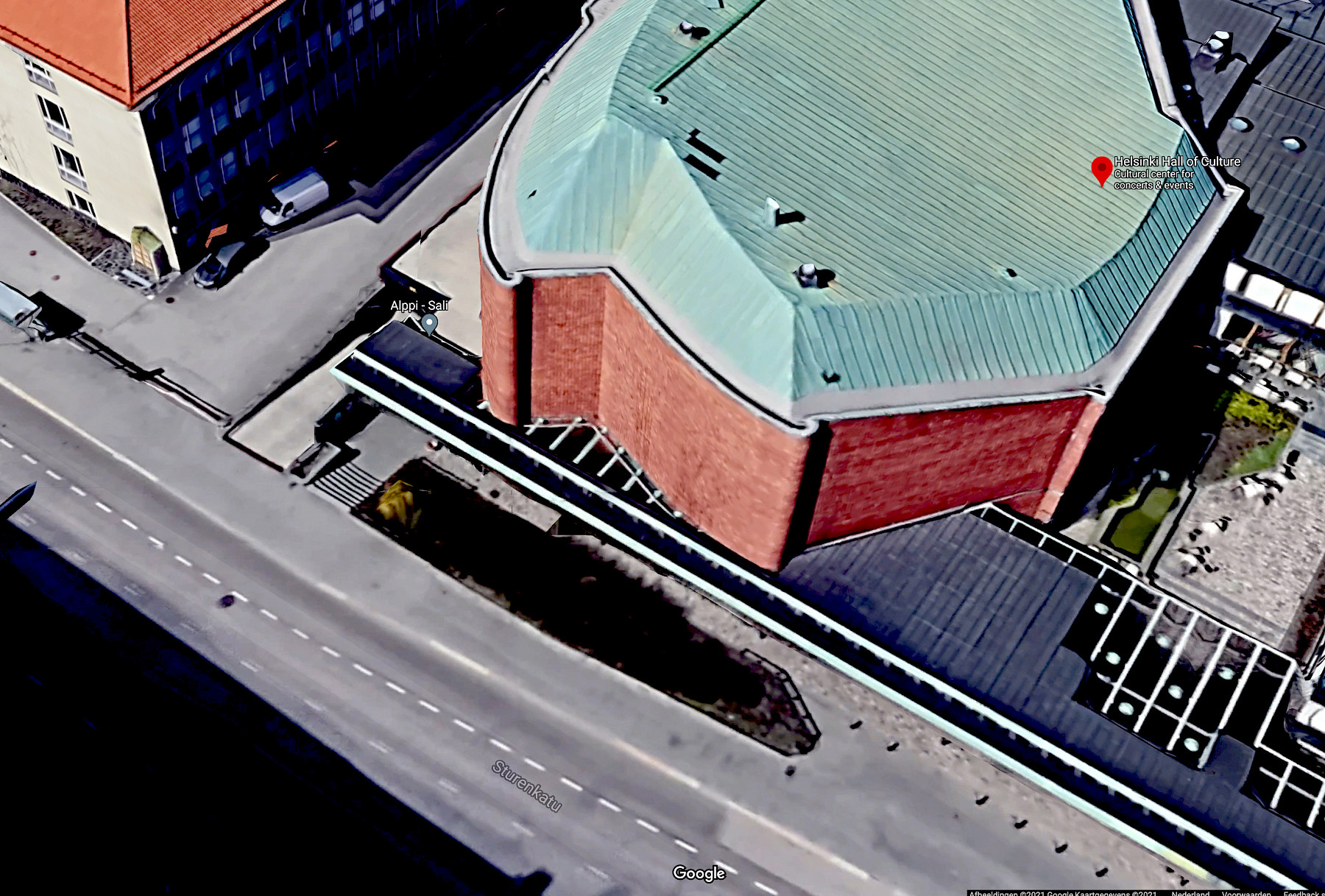
When I was watching a documentary on Alvar and Aino Aalto, my eyes were struck by the organic growth of ivy that was climbing up the outer brick wall of Aalto’s Kulttuuritalo (Hall of Culture) in Helsinki (opened in ’58). I started a research on the history of that ivy, that seems ad odds with the architecture, but that is touching at the same time (since nature is not tamed in a rigid manner, on the contrary: it lends the building some kind of natural dignity). I have found indications that the ivy (likely to be the Virginia Creeper) must have come back at least twice after having been removed the first (?) time. The first pic must be from the early seventies and the second from 1992. There is a different growth pattern and once the tapestry has covered a surface it cannot recede, so I conclude that between the two pics it has been removed and came back in full swing.
From then on it continues to such a degree that apparently measurements had to be taken. With the help of only three timelapses on streetview it’s clear that in 2011/2012 a renovation is being carried out. In 2013, on the fifth image, it looks perfectly executed. Not the slightest sign of recurring events to take place on the pristine wall.
When the ivy on the wall of my backyard was removed once, professionals prevented the after effects: they sealed the open wounds of the cut trunks and it never returned.
I am well aware of the fact that ivy damages the structure of the walls it’s growing on, so to my surprise new shoots are popping up in 2014 [6]. These shoots grew out to the structures that struck me; a drone [9] captures the slow ascent of the ivy around 2018-2029. The last image is a 3d Google Earth view that confirms the hardly visible growth on the outer wall. I will add a comment if I hear back from my written request to provide me with tracks records of what I have only guessed, since dozens of digital-born photographs circulating on the internet do not bring out all the clues that you might expect. Currently I’m working on other ways to visualise such arbitrary and trivial subject matter.